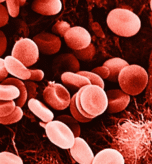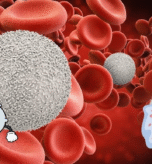617107978340342 GLO
Achieving glowing skin doesn’t have to break the bank or involve harsh chemicals. DIY face masks offer a natural, effective, and fun way to pamper yourself and unlock radiant beauty. In this article, we’ll explore the benefits of DIY face masks, provide recipes for different skin types, and offer tips for incorporating them into your skincare routine.
Benefits of DIY Face Masks
- Natural Ingredients: DIY face masks use natural ingredients that are gentle on the skin, reducing the risk of irritation and allergic reactions.
- Customization: You can tailor your face masks to your specific skin type and concerns, whether it’s acne, dryness, or hyperpigmentation.
- Cost-Effective: Most ingredients are readily available and affordable, making DIY face masks a budget-friendly alternative to commercial products.
- Fun and Relaxing: Creating and applying face masks can be a therapeutic and enjoyable experience.
Recipes for Different Skin Types
For Normal to Dry Skin
- Honey and Avocado Mask: Mix 1 tablespoon of honey with 1 mashed avocado. Apply for 15-20 minutes, then rinse with warm water. Honey’s antibacterial properties and avocado’s moisturizing benefits will leave your skin soft and supple.
- Oatmeal and Yogurt Mask: Combine 2 tablespoons of oatmeal with 1 tablespoon of plain yogurt. Apply for 10-15 minutes, then rinse with warm water. Oatmeal’s soothing properties and yogurt’s lactic acid will gently exfoliate and calm your skin.
For Oily Skin
- Clay and Lemon Mask: Mix 1 tablespoon of bentonite clay with 1 tablespoon of lemon juice. Apply for 10-15 minutes, then rinse with warm water. Clay’s absorbent properties and lemon’s astringent benefits will help control oil production and reduce pores.
- Cucumber and Mint Mask: Combine 1/2 cucumber, peeled and mashed, with 1 tablespoon of fresh mint leaves. Apply for 10-15 minutes, then rinse with cold water. Cucumber’s cooling properties and mint’s refreshing benefits will help reduce oiliness and soothe your skin.
For Acne-Prone Skin
- Tea Tree and Aloe Vera Mask: Mix 1 tablespoon of aloe vera gel with 2-3 drops of tea tree oil. Apply for 10-15 minutes, then rinse with warm water. Tea tree oil’s antibacterial properties and aloe vera’s soothing benefits will help reduce acne and inflammation.
- Green Clay and Apple Cider Vinegar Mask: Combine 1 tablespoon of green clay with 1 tablespoon of apple cider vinegar. Apply for 10-15 minutes, then rinse with warm water. Green clay’s absorbent properties and apple cider vinegar’s acidity will help balance your skin’s pH and reduce acne.
Tips for Using DIY Face Masks
- Patch Test: Always patch test new ingredients on a small area of your skin before applying the mask.
- Cleanse Your Skin: Ensure your skin is clean and free of makeup before applying the mask.
- Relax and Enjoy: Take a few minutes to relax and unwind while the mask works its magic.
- Moisturize: Follow up with a moisturizer to lock in the benefits and hydrate your skin.
90760400977458713 MTN
In conclusion, DIY face masks offer a natural, effective, and fun way to achieve glowing skin. By choosing the right ingredients for your skin type and concerns, you can unlock radiant beauty and enjoy the benefits of a consistent skincare routine. So, get creative, experiment with different recipes, and indulge in the bliss of DIY face masks!



